St. Teilo’s Church – Surrounded by Initiation
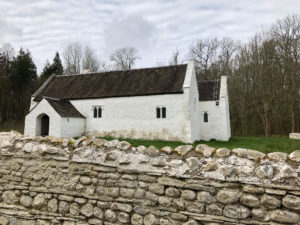 The Welsh National Museum of History at St. Fagan’s outside Cardiff, is an amazing collection of buildings from the past 1,000 years, brought from around Wales and rebuilt at this site. People can come and absorb their heritage while walking through a collection of edifices, seeing how their predecessors lived, and enjoying the outdoor setting.
The Welsh National Museum of History at St. Fagan’s outside Cardiff, is an amazing collection of buildings from the past 1,000 years, brought from around Wales and rebuilt at this site. People can come and absorb their heritage while walking through a collection of edifices, seeing how their predecessors lived, and enjoying the outdoor setting.
But there is one building which stands out from the others – a 12th Century Church called St. Teilo’s – which was reconstructed here and opened by the then Archbishop of Canterbury, +Rowan Williams, who was inducted as an honorary Druid in 2002 at the National Eisteddfod.
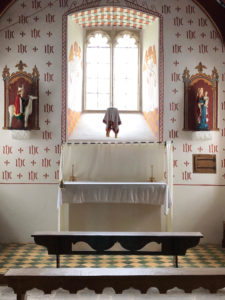 When the church was rebuilt at the Welsh National Museum of History, around one third of the frescos were still intact. However, experts visited a number of churches in Wales and elsewhere to recreate what the church might have looked like in its heyday. Now, given that these are experts, one has to assume that they didn’t simply let their imaginations run away with them, and I was assured by the Docent in the building that every recreation was not only loosely based on, but was an accurate recreation, of the frescos in other churches of the period.
When the church was rebuilt at the Welsh National Museum of History, around one third of the frescos were still intact. However, experts visited a number of churches in Wales and elsewhere to recreate what the church might have looked like in its heyday. Now, given that these are experts, one has to assume that they didn’t simply let their imaginations run away with them, and I was assured by the Docent in the building that every recreation was not only loosely based on, but was an accurate recreation, of the frescos in other churches of the period.
We learn that stained glass windows (particularly Jesse windows), statues and images in churches were used as teaching tools for the largely illiterate congregations, a measure necessary when services were said in Latin. However, these frescos are a veritable initiation in themselves. While obligations do not permit me to give a complete exegesis of the images contained in the church, I will draw attention to some images and objects which are particularly striking, and leave the reader to draw their own conclusions based on their own memberships.
One of the first amazing images is that of the Holy Grail apparently floating over a side altar. This image is so familiar with any reader of the Arthurian Legends I feel it unnecessary to elaborate further. The representation is quite stunning and unexpected.
The overall chapel reminds one of the one in Rennes-le-Chateau. While the images aren’t as jarring as in that space, the message is similar: an initiation is going on just by looking at the images. Now, I cannot say I viewed the frescoes in the right order, so I will simply present them and leave the reader to draw their own conclusions.
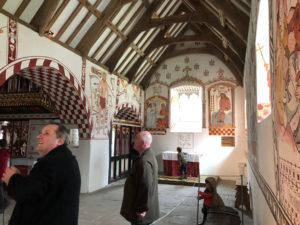
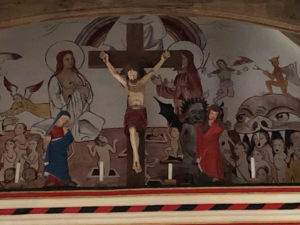
The Rood Screen is astonishing. On the left we see the BVM bearing her breast, as if offering succor to Our Lord, while on the right, even during the crucifixion, we see a Heironymus Bosch scene of damnation, complete with a demon devouring souls.
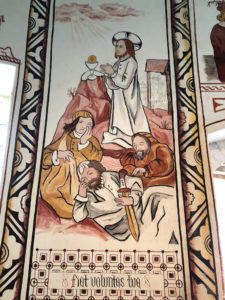
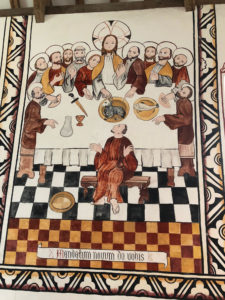
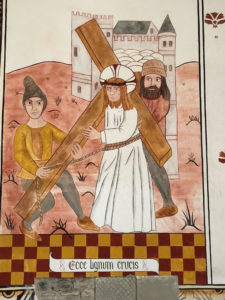
The agony of Gethsemane gives a portent of the Host and Chalice, while the Last Supper contains a number of implements known to esotericists, and the whole Lamb refers both the Christ and many Paschal Feast ceremonies still mystically enacted. Note the young man leaning on Jesus’ breast – probably the young St. John. This should remind us not to become too attached to Da Vinci’s image, made famous by Dan Brown: there is no ‘V’ here! Finally, note the Tau cross carried by Jesus in the last fresco.
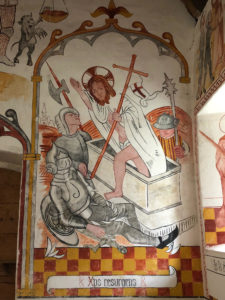

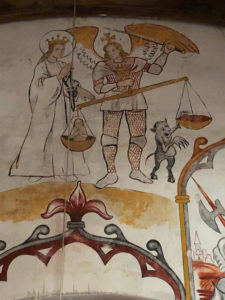
And here we come into truly initiatory territory. The image of Christ rising from the dead, stepping out of his tomb in his cerements (and remember that tradition tells us he was in a rock tomb) is actually seen in a Tracing Board in the Scottish Rectified Rite, some 500 years later. Note also the 3 sleeping guards. Indeed, this image also reflects the XXth Major Arcana of the Book of Thoth or Tarot, with its three bodies, a rising from an open sepulcher and even a cross of St. George. I will leave the implements surrounding the resurrected Christ to your meditations. Finally, the Last Judgment is astonishingly similar to the Egyptian Books of the Dead, and we encounter what could be taken as Ma’at looking on as St. Michael weighs the heart in a balance against the soul of the penitent, while the Devourer waits eagerly for the hearts of those found unworthy of salvation.
Now, what are images from the Tarot and 18th Century esoteric rituals doing in 12th Century frescoes? Are they recurring images which find their way into different Orders? Or are they simply unconscious additions by the modern restorers, unlikely though this should be given their professionalism? A colleague of mine is undertaking further study on this very subject, meeting with experts at the Museum, identifying which church frescoes were used as inspirations for the restoration, and going to those churches to photograph the frescoes used, with the intent of answering this very question. I will update you when the restuls are out.
In the meantime, what of the font featured in the cover photograph. I could go on about the four elements, Mandalas, Dee’s Watchtowers, and so forth. But now I have brought these images to a broader audience, and submit them to your consideration, as Ron Serling said at the opening of episodes of ‘The Twilight Zone’!
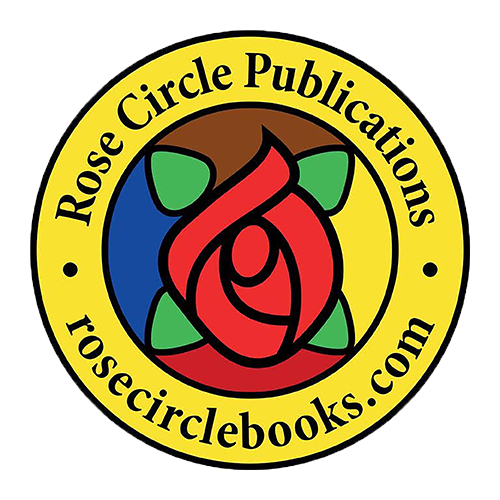
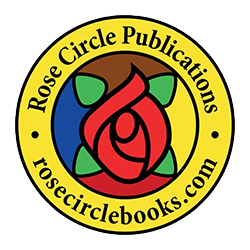

No Comments